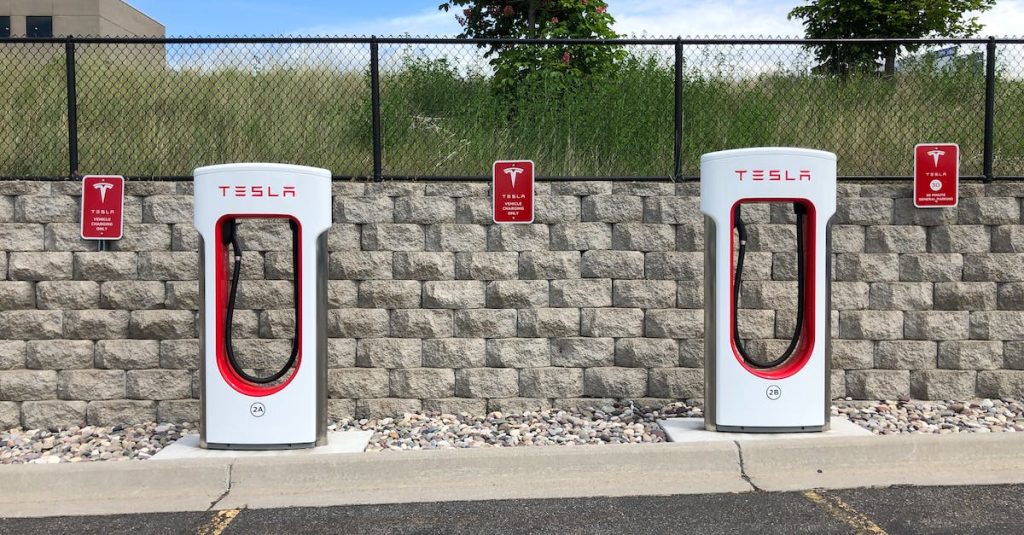The expansion of electric vehicle (EV) usage presents the challenge of enhancing charging technology for a better user experience. Major automakers such as Ford, General Motors, and Mercedes-Benz plan to adopt a new plug for electric vehicles by 2025, aimed at increasing compatibility with fast chargers throughout American highways, which can recharge EVs in under 30 minutes. This new plug design will help to standardize charging infrastructure, making it accessible for a wider range of electric vehicles and encouraging wider adoption of this eco-friendly technology. Furthermore, industry leaders are investing in the expansion of fast-charging networks along major routes, facilitating long-distance travel for EV owners and alleviating concerns about range limitations.
The Future of CCS Charging Stations
At present, North America has two primary types of EV plugs. The most common is the North American Charging Standard, designed by a leading electric car company exclusively for its vehicles. In contrast, the Combined Charging System (CCS) is typically utilized by most other manufacturers. The Bipartisan Infrastructure Law requires that any federally funded EV chargers be compatible with CCS plugs. This requirement ensures that a broader range of electric vehicles will be able to access the charging stations funded by the government, promoting a further widespread adoption of EVs across the country. As a result, it also encourages automotive manufacturers to continue developing and enhancing CCS-compatible technology, while fostering a more unified EV charging infrastructure.
Transitioning to a Unified Charging Standard
By 2024, established automakers intend to offer adapters that enable chargers to power CCS-equipped vehicles. By 2025, newly sold cars from these automakers will be equipped with the new plugs, eliminating the need for adapters. The transition to the new standard indicates potential limitations to CCS usage in the United States. As the adoption of CCS technology expands, it may take some time for charging infrastructure to catch up, resulting in some inconvenience for electric vehicle owners during the transition period. However, the unified charging standard is ultimately expected to streamline the charging process and improve the overall electric vehicle experience for consumers in the long run.
Benefits of the Updated Charging Network
The primary reason for the change is that the new system offers a more extensive network and superior performance compared to current CCS chargers. The updated charging network often includes locations without CCS chargers, while also delivering more dependable charging services, user-friendly operation, and automated billing. Additionally, the upgraded network ensures a seamless and convenient experience for users, ultimately promoting the adoption of electric vehicles. Furthermore, the enhancements in the system demonstrate the industry’s commitment to creating a robust, accessible infrastructure catering to the evolving needs and demands of electric vehicle owners.
Securing Prime Charging Locations
Charger locations play a vital role, particularly along high-traffic highways and popular shopping centers. However, newer charging companies can struggle to secure optimal locations, sometimes having to settle for less convenient or potentially hazardous sites. As a result, this compromises the ability to effectively cater to the needs of electric vehicle owners, subsequently affecting the overall growth of the EV market. To overcome this challenge, charging companies need to focus on partnerships and strategic negotiations with property owners, businesses, and government entities to secure prime locations that are both convenient and safe for EV owners.
Ford and GM’s Collaboration for a Better Charging Infrastructure
Adapting to the shifting charging environment, Ford and General Motors have revealed plans to deploy 30,000 chargers compatible with both plug types throughout the United States and Canada. This joint effort emphasizes the growing necessity for enhanced charging infrastructure to meet the rising demand for electric vehicles. The collaboration between these automotive giants aims to minimize range anxiety and make EV ownership more appealing to potential buyers. By increasing the availability of charging stations and ensuring compatibility with different plug types, Ford and GM are working together to accelerate the transition to sustainable transportation.
FAQ
What is the new plug design for electric vehicles?
The new plug design aims to increase compatibility with fast chargers throughout American highways, allowing EVs to recharge in under 30 minutes. This design will help standardize charging infrastructure and make it accessible to a wider range of electric vehicles, encouraging wider adoption of eco-friendly technology.
What are the two primary types of EV plugs in North America?
The two primary types of EV plugs in North America are the North American Charging Standard, exclusive to a leading electric car company, and the Combined Charging System (CCS), which is used by most other manufacturers.
What will the Bipartisan Infrastructure Law require for federally funded EV chargers?
The Bipartisan Infrastructure Law mandates that all federally funded EV chargers be compatible with CCS plugs. This ensures broader access for a range of electric vehicles and promotes widespread adoption of EVs across the country.
When is the transition to a unified charging standard expected to take place?
By 2024, automakers plan to offer adapters for chargers to power CCS-equipped vehicles. By 2025, new vehicles from these automakers will be equipped with the new plugs, eliminating the need for adapters.
What are the benefits of the updated charging network?
The updated charging network offers a more extensive network and superior performance, with locations at places without CCS chargers, more dependable charging services, user-friendly operation, and automated billing. It ensures a seamless and convenient experience for users, promoting the adoption of electric vehicles.
How are Ford and General Motors contributing to the development of better charging infrastructure?
Ford and General Motors plan to deploy 30,000 chargers compatible with both plug types throughout the United States and Canada. Their collaboration aims to minimize range anxiety and make EV ownership more appealing to potential buyers, thus accelerating the transition to sustainable transportation.
First Reported on: nytimes.com
Featured Image Credit: Photo by Chad Russell; Pexels; Thank you!




























